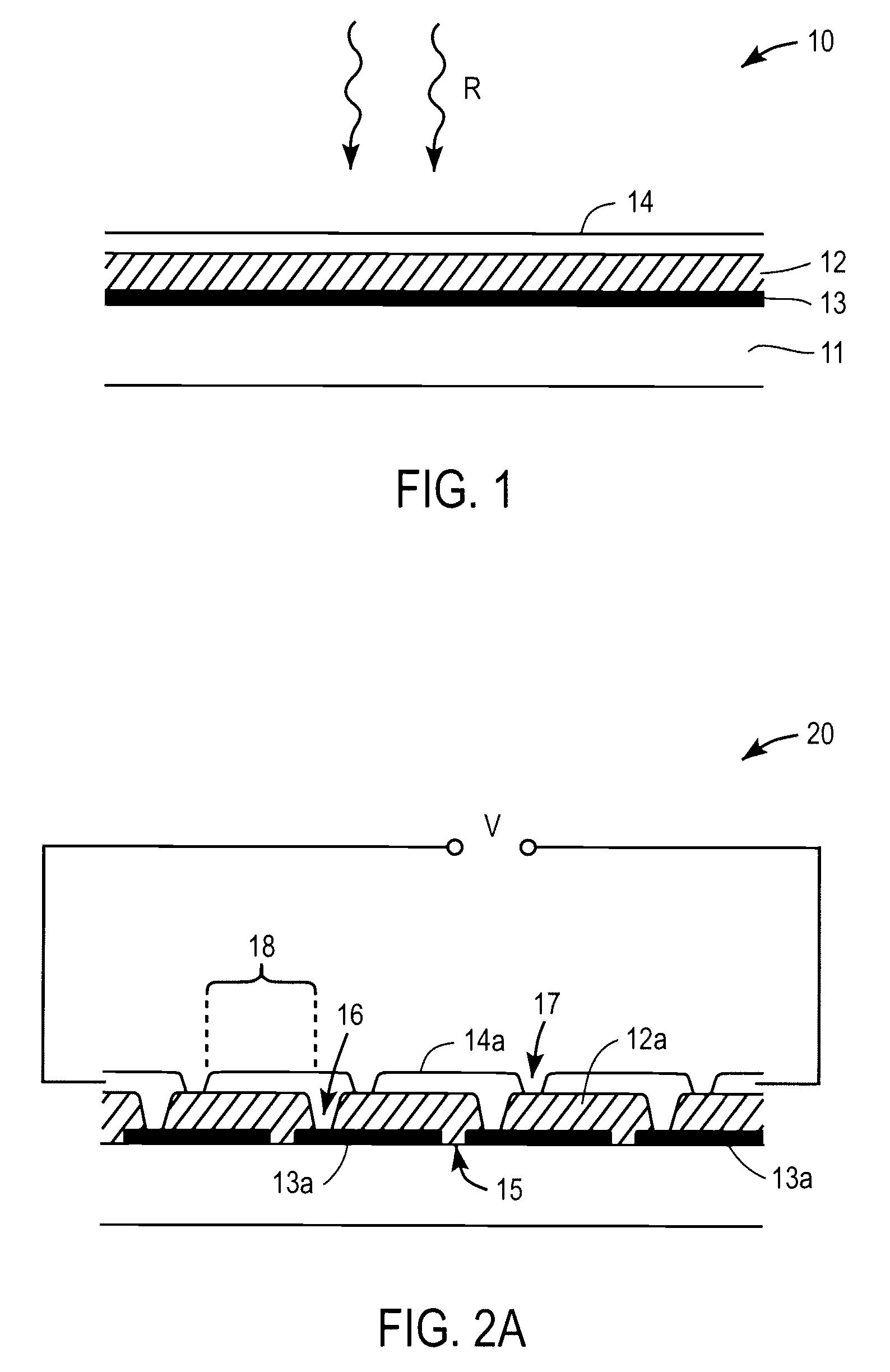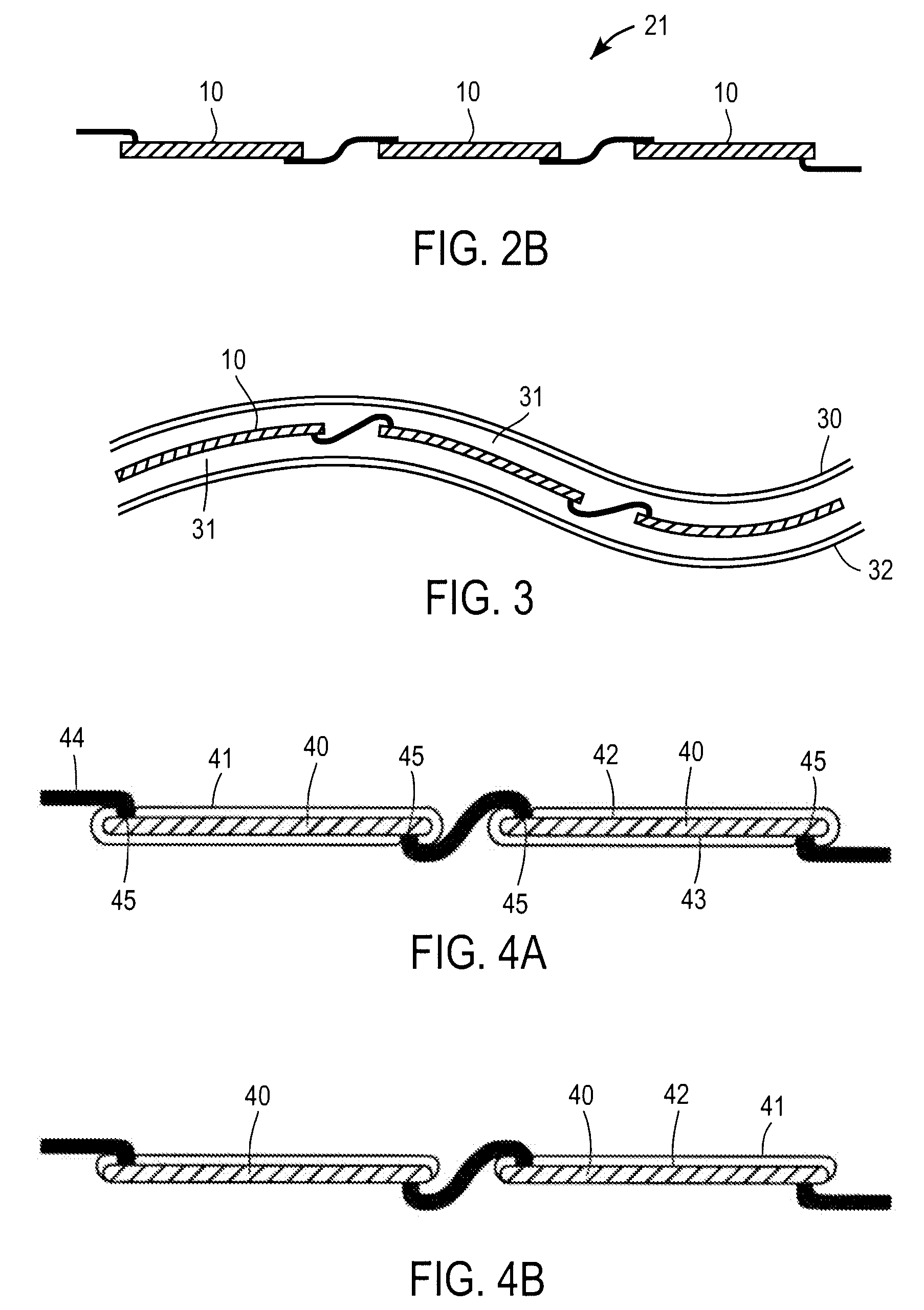Technique for Manufacturing Photovoltaic Modules
a technology of photovoltaic modules and manufacturing methods, applied in the direction of photovoltaics, electrical equipment, semiconductor devices, etc., can solve the problems of environmental instability, corrosion and cell deterioration, and the flexible thin film photovoltaic module of fig. 3 may have the drawback of environmental instability, and achieve the effect of improving environmental stability
- Summary
- Abstract
- Description
- Claims
- Application Information
AI Technical Summary
Benefits of technology
Problems solved by technology
Method used
Image
Examples
Embodiment Construction
[0024] In one embodiment of the present invention, each solar cell in the circuit is individually covered by a transparent moisture barrier material layer before the cells are integrated into circuits and then packaged into modules. FIG. 4A shows two exemplary CIGS(S) solar cells 40 with all the components and layers indicated in FIG. 1. For example, the solar cells 40 may be fabricated on flexible foil substrates i.e. substrate 11 of FIG. 1 may be a metallic foil. The solar cells 40 are covered by a transparent moisture barrier material layer 41, which as shown in FIG. 4A covers the entire cell 40 including top and bottom surfaces, and in FIG. 4B covers the top illuminating surface 42 of the cell where the light enters the device. This top illuminating surface 42 is the most sensitive surface to protect from moisture and in some cases oxygen. The transparent moisture barrier material layer 41 may optionally wrap around to the back surface 43 of the foil substrate as shown in FIG. 4...
PUM
 Login to View More
Login to View More Abstract
Description
Claims
Application Information
 Login to View More
Login to View More - R&D
- Intellectual Property
- Life Sciences
- Materials
- Tech Scout
- Unparalleled Data Quality
- Higher Quality Content
- 60% Fewer Hallucinations
Browse by: Latest US Patents, China's latest patents, Technical Efficacy Thesaurus, Application Domain, Technology Topic, Popular Technical Reports.
© 2025 PatSnap. All rights reserved.Legal|Privacy policy|Modern Slavery Act Transparency Statement|Sitemap|About US| Contact US: help@patsnap.com



